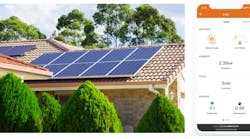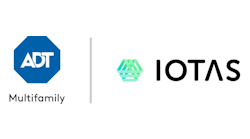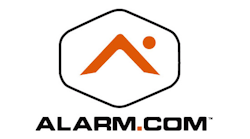This article originally appeared in the July 2022 issue of Security Business magazine. When sharing, don’t forget to mention Security Business magazine on LinkedIn and @SecBusinessMag on Twitter.
With emerging markets as the theme this month, I was struck recently by how many emerging markets there are strictly in the residential space. As I attended last month’s Electronic Security Expo (ESX), I was confronted with several news items that all seemed to hit on that show’s overarching theme: Companies are finding more and more ways into homes – whether they are owned, rented, or leased.
For a few large players, it seems the next route into the home is through the roof, or at least atop it; in fact, pun not intended, solar is one of the hottest residential technologies right now, as many homeowners value its potential cost savings and environmental friendliness. Smart home and security companies have seen this trend coming, as Vivint famously jumped on the solar bandwagon more than a decade ago; however, now several of the largest smart home/security players, including ADT, Brinks and Alarm.com, have joined in the potential gold rush.
ADT revealed its plans for solar late last year with the acquisition of Sunpro; and Brinks Home followed by partnering with Sunnova Energy. Now at ESX, Alarm.com is taking a different path to land solar users by creating a monitoring software specifically for solar energy usage.
“The Alarm.com Solar Monitoring integration enables homeowners with SolarEdge or Enphase inverters to monitor solar panel energy production and consumption in the Alarm.com mobile app, empowering them to make smart decisions about home energy use,” explains Shawn Barry, the company’s VP of Strategic Sales.
I spoke with Mr. Barry at ESX, where he walked me through the offering and how it can be a potential gateway for alarm dealers into many more smart and connected homes. He showed me data from the Pew Research Center that shows that more than 45% of homeowners are considering solar panels for their residence.
“This is an astounding statistic, and there is genuine excitement about embracing the solar industry, working together, and creating an enhanced end-user experience,” Barry says.
Barry adds that his company will offer certification via a Solar Program Academy for its dealers, which will educate them on sales and installation tactics. “In the first week of our launch, hundreds of service providers have already received their Alarm.com solar certification,” he says.
Smart Apartments Remain a New Frontier
As far back as 2017, I reported on the industry’s efforts to capture the renter’s market. “Almost everyone is working on this,” said Jeffrey Gardner, then the President of MONI (which five years later has evolved into Brinks Home). “When we can find a way to manage the product costs, it will lead to a new level of penetration.”
Interestingly, as I was moderating a panel on stage at ESX talking about how do-it-yourself solutions are increasing residential security penetration rates (thanks to industry consultant Kirk MacDowell and RING’s George Bish), ADT was quietly acquiring a company called IOTAS, a software integration platform designed specifically for smart apartments.
“By combining IOTAS’ innovative vision with ADT’s trusted brand and operational know-how, we are poised to become the industry leader in the fast-growing, heavily-fragmented multifamily space,” Sce Pike, CEO & President of IOTAS, said in a statement.
“Multi-family rental properties represent a particularly lucrative opportunity for smart device manufacturers, since they deploy smart home device packages to multiple units at a time,” writes Parks Associates. “Research shows that 83% of these builders report the ability to integrate smart home technology with property management software as ‘very important.’”
While the smart apartment market has been a mythical beast that the smart home/security vendors have been chasing for at least five years, it also represents a tremendous opportunity for integrators, who would be called upon by these multi-family rental properties to install and maintain the systems.
In the end, these two emerging entrances into smart residential should translate into growth in residential penetration rates, and everyone – security vendors and integrators – should feel the positive impact.
Paul Rothman is Editor-in-Chief of Security Business magazine. Email him your comments and questions at [email protected]. Access the current issue, full archives and apply for a free subscription at www.securitybusinessmag.com.







